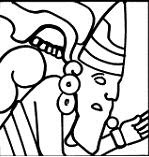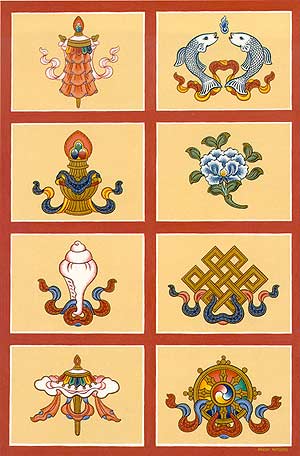 |
| Izapa Stela 5 |
Dr. Wright is an expert in the Maya Hieroglyphs and has spent many field studies studying the Maya. He is particularly interested in correlations between the ancient Maya people and the Book of Mormon.
Many experts have their theory about Stela 5. Some LDS scholars think that it depicts Lehi's Vision of the Tree of Life as found in the Book of Mormon in 1 Nephi Ch 8. I have heard this Mormon myth before and was excited to learn if it had any validity.
Wright's objective was to demonstrate the importance of having good data and good methodology in order to have the most accurate conclusions that are not biased by one's assumptions regarding the interpretation of Maya hieroglyphs.
Wright began by discussing the Mormon folklore and how it came to exist. In the 1980s, Dr. Jakeman at BYU discovered correlations between Izapa Stela 5 and Lehi's vision of the Tree of Life. He noted figures that looked like Lehi and Sariah (pictured below). Note: If you are curious of other correlations Jakeman noted, see "Jakeman" link below. Remember to remain skeptical as you read, because his theory is known to be inaccurate today.
 |
| "Sariah" |
 |
| "Lehi" |
Jakeman's Interpretation of Stela 5 is now known to be incorrect today. He used an inaccurate depiction of Stela 5 that was missing finite details, such as the bloodletter in what was thought to be "Sariah's" hand or the incense below her feet. The bloodletter and incense were used by the Gods to demonstrate to man the proper way to worship: through blood sacrifice and burning incense. This is learned in the Popol Vuh. (Unfortunately I couldn't find a depiction of Stela 5 with these finite details easily visible.) Would Sariah hold a bloodletter in the Tree of Life to sacrifice blood and burn incense to the Gods? NO. Wright says that the Tree depicted in the picture has NEVER been referred to has the "Tree of Life" by the Maya people. Instead, it is an "alligator tree"and is referred to as the "World tree," which represents the first living things that emerges from the waters of the primordial sea in Maya theology.
Wright demonstrated how can find whatever you want to find in a glyph by showing how he found the 8 Buddism symbols (pictured below) in Izapa Stela 5. Thus, there must be a connections between the Mayas and Buddism! See if you can find them in Stela 5 above.
Could you find them? He pointed all of them out in his presentation. It interests me how different cultures used similar symbols with vastly different meanings. Yet if you try to connect them, you can easily lead yourself to believe misinterpretations, as demonstrated in the correlations
This is why it is important to study the context of symbols and hieroglyphs within a culture and at as many sites as possible within the civilization.
In the Q&A, Wright discussed another misinterpretation of Maya glyphs: "The end of the world" prophecy. Wright says that in fact, when originally interpreted it was thought to have said "December 23, 2012 He will descend." Sounds ominous, right? However, after taking the damaged glyphs into account and including those it then read "On December 23, 2012, it will commemorate this date." This essentially means, in so many years, it will be the anniversary of whatever happened today. Yes, the calendar ends after the year 2012, but we do not know why and do not have accurate data to support the assumed conclusion that 2012 will be the "End of the world."
He said that the modern Maya people laugh whenever they hear about the "end of the world" hype, because they know it is not a part of their theology. (See funny comics I found online illustrating this point.) Yet think of the millions of people– some scientists included– who believe in the Maya prophecy. . .
This reminds me of a conversation I had with a native Maya in Mexico. He wanted to inform me of the need to be skeptical regarding excavations due to the many misinterpretations that happen when another culture thinks they have the right knowledge to interpret the meaning of an ancient culture's text. This man wanted more natives helping with the process. However, (in his opinion) due to the ethnocentrism of the whites, this wasn't reality.
In order to reach accurate conclusions, it is essential to have the most accurate tools, background, data, and methodology when analyzing something of such historical significance to another culture.
Wright says that the Maya have NEVER made a prophecy of any kind regarding the "End of the world" and that it all resulted from a misinterpretation using bad (incomplete) data and bad methodology.
This brings up an important point. When studying ancient culture, we must remember to keep the cultural piece–in this case, hieroglyphs–within the context of the original culture. We can't just thrust our assumptions upon a piece and assume we are qualified experts to know the significance.
 During the presentation Q&A, I also learned that according National Geographic’s Maya expert “George Stewart” there are still 6,000 Maya sites to be excavated… This means that only less than 1% have been excavated. Think of everything there is still to learn about this ancient culture. . . Who knows, perhaps there is an end of the world prophesy within one of these ruins, but I highly doubt it.
During the presentation Q&A, I also learned that according National Geographic’s Maya expert “George Stewart” there are still 6,000 Maya sites to be excavated… This means that only less than 1% have been excavated. Think of everything there is still to learn about this ancient culture. . . Who knows, perhaps there is an end of the world prophesy within one of these ruins, but I highly doubt it.
Also, for those who want to learn more about correlations between the Book of Mormon and the Maya/Ancient America Civilizations, Dr. Wright recommended the book An Ancient American Setting for the Book of Mormon by John L. Sorenson. This book uses accurate data and methodology that is accepted by scholars both in and outside of the LDS faith.


I agree. This relates to my post (A picture is worth a 1000 words), when I said:
ReplyDelete"We [often] view ancient cultures through our own cultural paradigm. It is an interesting psychological phenomenon, and it makes sense that we would do this. I mean, we have only experienced the world in the present; so it can be hard to think outside of the box and recognize that perhaps other cultures functioned differently and had a completely opposite cultural perspective.
Unfortunately, this causes us to misinterpret the past, which inhibits us to understanding the truth. For example, during the matriarchic rule in Ancient Egypt, women were the educators, the ones whom the priesthood was passed on through, and the source of life. But because of how our society portrays men and women today, we interpret this woman in the statue to be submissive to her husband, whereas in reality, it was her actually showing ownership of her husband."
Another example that I have run into with some of my friends who are not Mormon, is the faith vs works dispute. They hold the opinion that you will be automatically saved because of your faith and not by your works because of Rom. 11:6 which says, "But if it is by grace, it is no longer on the basis of works, otherwise grace is no longer grace."
On the other hand, I, of course, believe that it is by faith + works that you are saved, as I have been taught all my life as taught in James 2 :24, "Ye see then how that by aworks a man is justified, and not by faith only."
This topic has been a long lasting dispute, because people fail to consider the context of Rom. 11:6. This is when Paul was speaking to the Pharisees who, as we all know, were so consumed in their laws that they completely forgot about their faith. So here, Paul is trying to teach them that it is not their Works (aka Laws) that they are saved, but by their faith.
I definitely agree that you need to read things in context of the culture or text, in order to understand better. Of course, we will never really get the context in body language or vocal intonations, so we need to do everything else that we can to try and understand these ancient texts.
Also, as a side note: In reference to where you said that the natives do not actually reference these tress as "Trees of Life;" my husband and I went to Mexico on our honeymoon, and a native was selling replicas of the Stela 5, titled "Arbor de Vita" which translates to the "Tree of Life." I can post a picture if you would like :).
Whoa. I didn't realize that was so long! Sorry!
ReplyDeleteNo worries on the length of the post. Regarding the Tree of Life, he said that although cultures have trees that represent life, no where in formal Maya hieroglyphs, specifically the popol vuh, is it referred to as "The Tree of Life." Also, Tree of Life is "árbol de vida." (which I'm sure is what your stone says) I would imagine that it's most likely that they call it the "tree of life" to cater to tourists, because people don't want the detailed logistics of their creation story.
ReplyDeleteSO many good points!!! :D
ReplyDeleteI'd heard this "myth" about the particular work you discussed, though not to the detail you discussed of course. I pretty much always thought it a poorly developed idea for a couple of reasons:
Trees are a good symbol of nature, which is always represented in mythology. In all of our LDS theology, we really only have two trees: the Tree of the Knowledge of Good and Evil and the Tree of Life. Of these, only the first was an actual tree while the other was entirely symbolic. Basically, trees tend to function more in a (non-Judeo-Christian) mythological sense than as a Christian symbol.
My first thought when you threw up the image was of how common trees were in Greek mythology with nymphs that were actual tree spirits. I then thought of Yggdrasil (slightly embarrassing but also amusing side note: I first wrote "Nordrassil," which is the world tree in the Warcraft franchise...) the World Tree in Norse mythology which, in incredibly simplified terms, connected the Earth to Heaven and Hell. As you then mentioned, there are lots of "world trees" in different mythologies.
The fact that the Maya don't believe these things either (those who are LDS for the Izapa Stela and all those, especially Christians, for 2012) is also kind of a kick against those who get excited over these things.
Although, the image of Lehi *does* kind of look like the picture my Book of Mormon professor drew...
Good job with a very engaging post, Brianne! :)
That's so interesting Jared. I really enjoyed the connection you made with trees and other religions. There are so many stories that so many religions share, like the story of Joseph and Potiphar's wife. I was reading in some books I checked out of the library, that that story has circulated around many different countries all around the world for many centuries.
ReplyDeleteThe tree imagery remains well and alive today. See the movie Avatar!
ReplyDelete